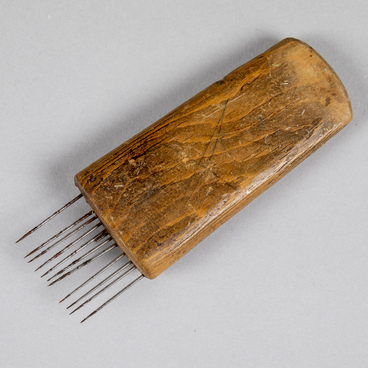In societies with traditional economic systems, handicraft items were created for personal use and served both practical and aesthetic purposes. Most families had their needs covered with what they could make at home. Men worked with wood, metal and bone, while women processed fur, sewed clothes and shoes, wove, knitted, braided, and made various utensils out of birch bark.
Cultural traditions in art, including techniques, recurring images and themes, appeared later than crafts. No special knowledge or qualifications were required for the person to engage in traditional crafts — they were available to everyone.
Woodworking is one of the most common traditional crafts.
In her book “Khanty and Mansi: a Look from the 21st century”, Zoya Petrovna Sokolova writes:






